Personality Characteristics in Handwriting
Graphology is based on the study and description of strokes of handwriting, which are the traits that will bring personality to light.
Graphology is a projective technique, which subject matter is handwriting. This allows to get to know the personality of the writer in deep. Graphology has nothing to do with hidden sciences. Even though it is not a science, it is a very valuable projective test. Projective techniques are the ones that act as stimulus for the individual to exteriorize their subconscious. The subconscious puts together those experiences that even though are present in all of us, we are not able to recall.
Graphology: Handwriting Analysis Information
The way human beings write is unique and this technique, Graphology, is being applied more and more in different fields. It reflects personal traits without the need of the presence of the individual who is the subject matter.
Which are the most important strokes to take into account when observing handwriting?
At the time of carrying out a graphological study, we need to consider the gestures that will evidence the characteristics of the writer.
It is not about “reading” what the person has written. It is more about caring about the position of the text in a white piece of paper, the distance between words, letters and lines, the size and shape of the same, the slant and direction of the lines, the speed and pressure applied, among other traits, other than the content written in the text.
Hidden meaning of Handwriting
The graphical features are the variations of movement, shape and space of the graphical gesture. In almost all cases they are feasible of being measured and are compared to a module that is considered normal. What differs from the established module indicates that there is some symptom. Each one of these gestures or graphical aspects will reveal different traits of the writer.
There are eight graphical categories analyzed by graphology. We will describe the features of each:
1. Layout: What Spacing between words and letters means?
Layout is the first of the aspect of handwriting that we shall analyze. Through order, we study the general organization of the text that is written on the page. The page symbolizes the environment in which the individual acts and projects his personality. The layout or order is the overall impression the written text provides us. It is related to the degree of clarity in the ideas of the writer, organization of personal time, ability for adaptation to the social norms that will allow him to duly adjust to the environment he acts in. In graphology, order helps us detect how the writer stands before life in general.
It is the aspect that studies internal order (spacing) through the execution of letters and of margins of writing text.
Layout includes three sub-aspects:
- Distribution of letters, of words and lines (word spacing, line spacing) that, when clear, without layout crashes and harmonic, symbolizes the order of ideas.
- Disposition of the text within the page, taking into account the four margins, (page margins: Sides of the page each have a meaning) that must be large enough, cared for, with a harmonic heading. This will correspond to a good social adjustment to the environment.
- Proportions: Is the equilibrium of the dimensions of letters between each other. It means there is equilibrium in sense of humor and judgment upon judging. Someone who reflects objectivity in appreciation.
Read also: What your margins say: Graphology Analysis: Margins
Handwriting Analysis Traits
2. Dimension: Size of Handwriting
It is the size and width of letters in a piece of writing. It is an objective parameter since it can be measured. It represents self-esteem of the writer, self-concept, how much the individual appreciates himself, degree of introversion or extroversion and degree of self-confidence. It reflects whether the writer is prone to generalization or is “meticulous” in his appreciations. In order to measure size we consider four or five ovals of the first two or three lines of text, four or five lines in the middle and four or five lines at the end of the writing. The same is done for upper extensions and lower extensions and an average is obtained. If size inequalities bigger than 2 mm are found, it is important to consign the same.
What the Size of the Handwriting Reveals?
Size may be:
- Large: from 3 to 5 mm.
- Medium: from 2.5 to 3 mm.
- Small: smaller than 2.5 mm.
3. Shape: What does medium Handwriting mean?
Shape is the structure “per se” of each and one of the letters in the writing (round, angled). The shape that letters take in a writing reflect appearance, modals, the way the individual conducts himself, whether he does it softly or intensively, with reservation or expansion, nicely or not nicely, the culture and lifestyle. It provides an idea of the cultural emotional and mental level of a person. It provides an idea of tendencies, adjustment problems and equilibrium. The shape hides conscious and subconscious symbolic content. Children start writing by copying, repeating shapes, imitating what they are taught. With time and evolution, learned calligraphic shapes must start to mutate to self, personal shapes.
This parameter, contrary to others like size, slant, direction of lines, speed, is subjective. It is not possible to measure it. It must be based on logics and comparison with examples. For that reason, we need to define clearly when a piece of writing angled and when it is curved.
4. Slant: What the slant of handwriting reveals
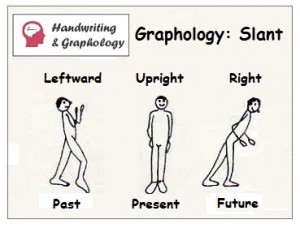
Inclination or Slant is where letters are deviated to from the vertical edge. In order to study inclination, upper extensions and lower extensions are enlarged and we observe the angle that is formed along with the line. From a psychological point of view, it expresses the need for an affectionate bond, need for contact and dependency of the individual on others. Also whether the individual approaches or withdraws from others. Also, within intellectual traits, it is associated to ability for reflection and initiative. In the business field, it measures persistence or versatility at work, ability for concentration, order, need for consult or praise.
What does handwriting slanted to the right mean?
There are different types of inclination in writing:
- Inclination to the right or rightward slant: Symbolizes extroversion.
- Inclination to the left or leftward slant: Reflects shyness or introversion.
- Vertical writing indicates a high degree of self-control.
- Unequal inclination: Tendency to mood swings. Psychological ambivalence.
5. Baseline: What the baseline of handwriting reveals
Direction of lines. If we take a look at the written page, we will easily discover whether the baselines are oriented upwards or downwards, whether they stay horizontal or in serpentines on top of the line. Lines that are incomplete or include indentation are not considered. Traditionally, ascending lines are associated to optimistic people and descending lines to pessimistic attitudes.
The direction of the written lines is related to will, change in mood and emotional stability of the writer. It reveals humor, degree of maturity, stability, persistence, ambition, fatigue, pessimism and optimism. When there is considerable physical fatigue, it is reflected in the direction of lines.
The lines of our writing bear the “burden of life”. On occasions, the whims of fate resist very well with ascending lines, or at least horizontal. And on other occasions frustration causes lines that drop. Direction may be ascendant, descendant, straight, sinuous, concave, convex, overlapping or unequal.

6. Speed
Speed of writing. To graphology, it is the speed of the writing. In the speed of writing we can see the ability for comprehension, intellectual assimilation and the speed of mental processes. It points out the speed to resolve tasks. It allows evaluating the intellectual level, adjustment to new scenarios, temper and activity. This will provide an idea of the professional performance. Each individual elaborates on the graphical space, leaving prints of their character, impulses and personal tendencies. Writing, according to speed, can be fast, slow, paused, hasty, and unequal, along with its variations.
7. Connection forms
Continuity or Flow connection: Is the way that letters tie between each other in one word. They are connected or disconnected, grouped, fragmented.
That is to say, cohesion within the text. It is not considered a break when placing a period, a tilde, or a “t” bar. This parameter is easy to measure, given that the percentage of bonds is calculated between upper and lower-case letters. Also, we analyze the drawings in each letter, whether it is bonded or connected to the next one or if the downstroke is connected or disconnected to the oval in question.
Also read: Handwriting Analysis letter S
Uncover the Secrets hidden in Handwriting
The cohesion of the traits of each letter is harder to evaluate objectively, since there are letters that are normally executed in two steps, like letter “t”. In these cases, an integral evaluation is carried out. We need to count with a magnifying glass or some equipment that helps us differentiate, for instance, juxtaposed strokes and, therefore, avoid mistakes.
8. Pressure
Pressure: Is the mark printed in the sheet of paper. The strength of the graphism. It symbolizes the intensity of the psychological energy of the writer. It represents the security of the individual in the actions he performs and the degree of conviction he has in what he develops as well as for himself. Vitality, sensuality and illness.
Uncover Personality Characteristics
The graphical features are useful to transmit the first steps to beginners, but they analyze the signs in an isolated way. It is important to clarify that they are merely descriptive. They give a meaning to each one. We must not only consider the description of the writing. The meaning of the way of writing is much more than that. We must take into account temper, character, whether there are fixations in the stages of evolution of libido, among others.
These are the most important aspects of handwriting to take into account at the time of carrying out a graphological study.

Read also: Handwriting Analysis: Letter “p”
Read also: What margins in handwriting means

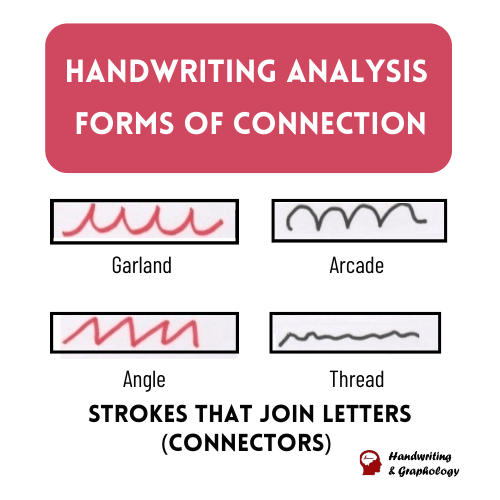
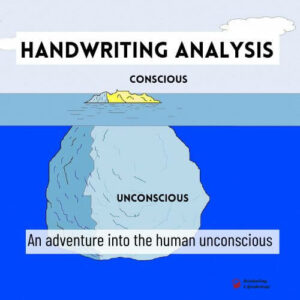

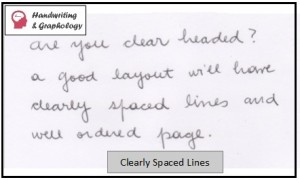

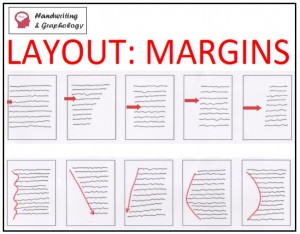
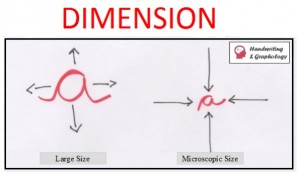
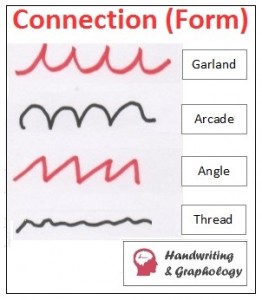
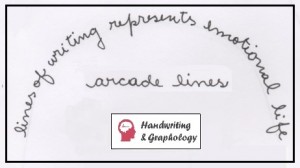
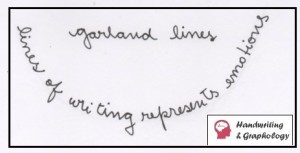
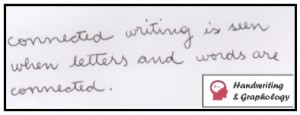
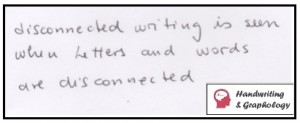
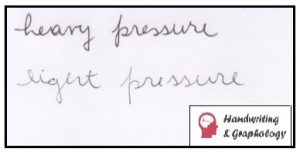

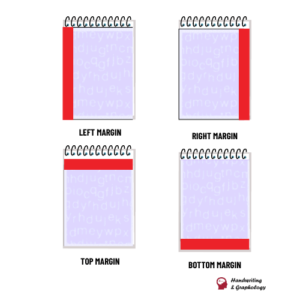


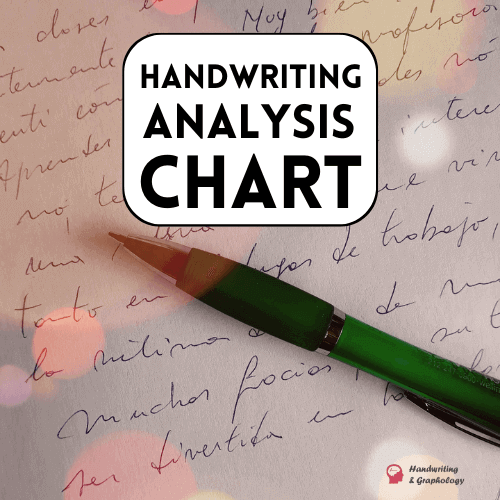
What does it mean if a person starts a letter with the name of a person and overwrites the first capital letter?
Thank you
I would also like to know what it means to overwrite letters.
He is confused about that person about something. May be not trusting that person fully.